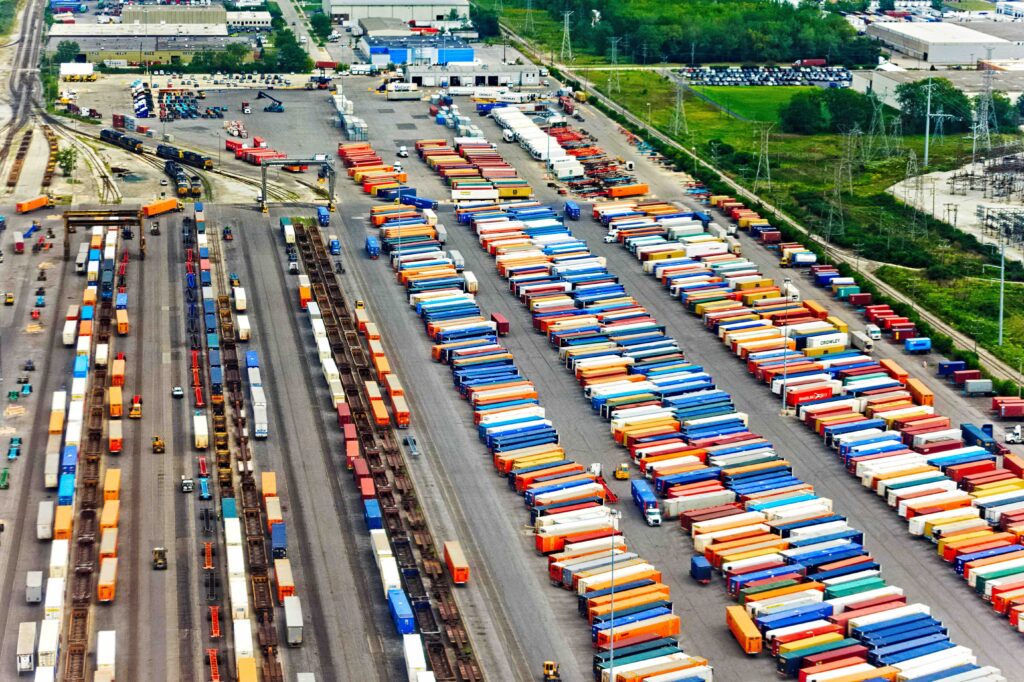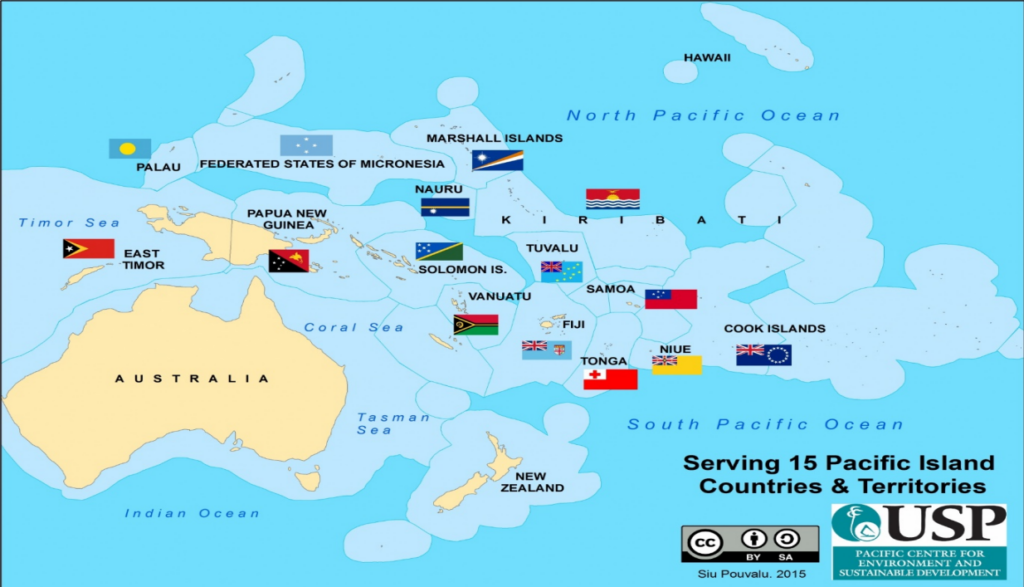
Oh, the places you’ll map! (with a career in GIS)
Editor’s note: This article written by Claire Krumm is part of the “Young and Geoawesome” series. The series aims to encourage young professionals to share their passion for all things geo and thereby build a more diverse, inclusive and welcoming geospatial community.
The railroad less traveled
The noon sun floats like a cooked yolk in what feels like a boiling bowl of udon soup. I’m wearing wrap around safety sunglasses, a too-large safety vest, and khakis that are overflowing with packets of earplugs. The large expanses of asphalt interspersed with flat, dusty land radiates heat into our pink-accented steel toe boots. I’m with five other women, an uncommon group in the San Bernardino intermodal yard.
‘Intermodal,’ at its core, means moving freight by two or more modes of transportation. San Bernardino, like most intermodal yards that include rail transport, is a long, rectangular, multi-acre piece of land. The scale of the yard’s operations is immense. Enormous gantry cranes straddle idle trains, gliding to pluck off their shipping containers and stack them elsewhere under the precise direction of a skilled operator. It’s like a claw machine, except the teddy bear weighs tens of thousands of pounds.
For me, however, the rail network is even more impressive from the sky. From a satellite view, the rail lines converge in intermodal yards like strings through a bead, fraying out on either side. They weave and braid around mountains and over rivers, forming this complicated pattern rooted in history and geography. If anything, it made me appreciate the precise planning required for each of my Amazon purchases to make it to my doorstep.
An unlikely internship
I joined BNSF Railway in 2019 as an Environmental Project Controls and Real Estate intern. I was majoring in Environmental Science and had recently added “Geospatial Information Science & Technology minor” to my resume. In my experience, GIS inevitably becomes a talking point in interviews, even if they aren’t explicitly looking for someone with GIS experience. Although it’s still a nebulous topic for many, the questions I’ve gotten about GIS are always inquisitive and enthusiastic. People usually don’t know how it works, but they know it can solve a lot of their problems.
Because of my skillset, I was given access to the company’s property Shapefiles. An exciting moment for the team was when I gave them the total area of property they managed. Something as simple as knowing how to navigate to “Calculate Geometry” in ArcMap produced a key statistic for the department.
The makings of a good mapmaker
I know that reading that statement gives any good mapmaker pause: Would I learn anything doing GIS at a company that doesn’t specialize in it?
I’ll admit that a reservation I had about working in the private sector was that I feared I wouldn’t be doing a “real” job in the environmental or GIS fields. Many of my peers were doing cool research projects on wildfire impacts using Landsat imagery or agricultural analysis at the Environmental Defense Fund. I worried that an established company would be unwilling to adopt new tools for processes they’d been doing for decades, or, in the case of America’s railroad industry, centuries.
But it wasn’t all registering coordinate systems and generating simple maps. My biggest project was designing a scoring methodology for managing environmental risk on the company’s leased properties. This program helps the department prioritize sites and follow a clear plan of action for next steps. My manager and I agreed that a property’s location in relation to federal lands and other sensitive receptors should factor into the scoring, but this information isn’t available on a lease agreement or an inspection report. It sounded like a good opportunity to make a map.
Connect the dots you have
Sometimes, saying “We can do this now by connecting these dots, but we could do that later if we collected those dots” is still value added.
I’m a firm believer that there is almost always a spatial element to every problem. I think back to “My First GIS Story,” a tale of John Snow, a map, and some cholera. You can read more about this classic here. It’s a simple story, but it always reminds me how powerful this type of work can be.
Like John Snow, I couldn’t resist the opportunity to create an ArcGIS Online app. I wanted to plot every property and create this detailed table showing intersections and proximities between land types and links to inspection reports. In reality, it wasn’t the streamlined, totally automatic tool I was hoping for. The hard truth is that spatial data — regardless of whether it’s from a company or a nonprofit or a government agency — is rarely collected in the way you want, organized in the way you want, or shared in the way you want.
I learned to accept these limitations and meet in the middle. My final version of the app used a manually inputted coordinate pair to find a property and generate a report showing its proximity to different land types, which could then be attached to the scoring sheet. Sometimes, saying “We can do this now by connecting these dots, but we could do that later if we collected those dots” is still value added.
You’re off to great places
This skillset has allowed me to step into the pharmaceutical, transportation, and, now, energy sectors. In my current position as the Carbon Analyst at Kevala, Inc., I am the product owner for Kevala’s carbon tracing product and subject matter expert on how to best estimate the greenhouse emissions associated with grid electricity. While we build the Total Carbon Accounting methodology, I collaborate with our data science and design teams to decide how to best represent the grid’s infrastructure, illustrate the flow of electricity, and communicate carbon intensity at different spatial levels.
My early career has shown me that the data we collect, the analyses we perform, and the tools we build as GIS professionals don’t have to (and probably won’t) be perfect, but they are still incredibly helpful for the people who need them. And those people are everywhere, in the most unexpected places.
? Connect with Claire on LinkedIn. Cover photo by Sam LaRussa on Unsplash.
Did you like the article about career in GIS? Read more and subscribe to our monthly newsletter!




















